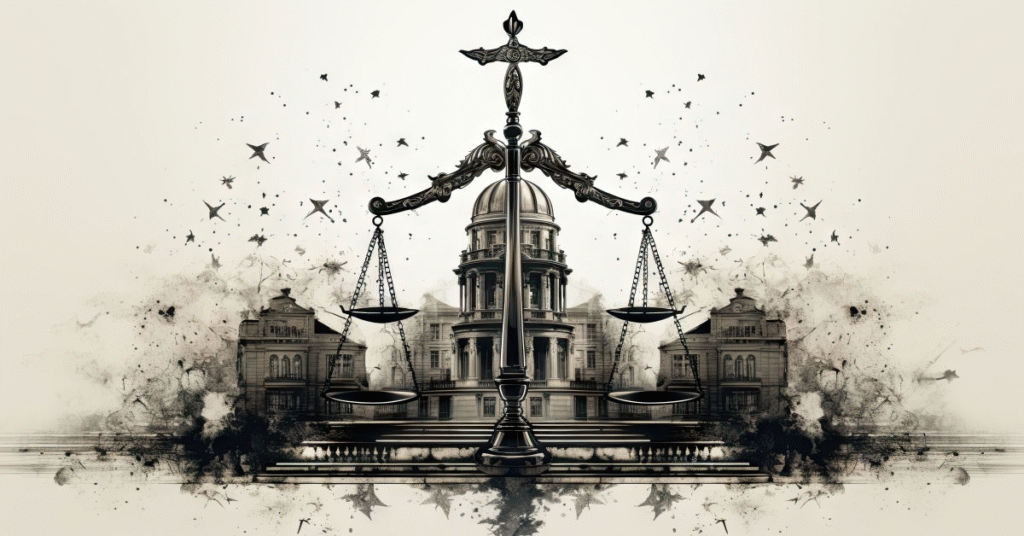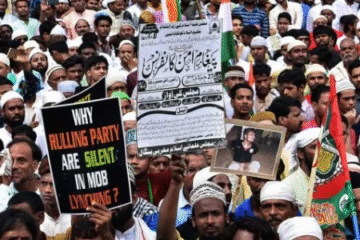
This Article is written by Ravi Gupta from Siddharth Law College, Mumbai, an intern under Legal Vidhiya
Abstract
While according to Hindus, marriage is a sacrament, as per Mahomedan law marriage is a contract which has for its object the procreation and the legalisation of children. The institution of marriage was not recognized in the primitive times. The relationship of sexes was reduced to the beasts of the field, as man lived like any other animal. At a later stage, it was felt necessary to have an ownership of a definite man over a child like ownership of any other material thing. And due to this it became necessary to know the paternity (‘Pitrutva’ relationship between the father and the child) of the child. This is the beginning of the institution of marriage. But the growth of this institution was very slow and haphazard. Slowly the sex relations got confined to a specific tribal group and finally it reached the stage when the sexual relationship got confined only to the man and woman. This couple can stand united together with the bondage of marriage, that came to be known to the society.
In 2024, India is expected to have around 4.8 million (48 lakh) weddings between November and December, generating a significant economic boost. This is an increase from the 3.5 million weddings in the same period last year, according to the Confederation of All India Traders (CAIT). These weddings are projected to drive a market spending of approximately Rs 6 lakh crore. [1]
Introduction
Marriage is in existence since immemorial antiquity i.e. beyond the reach of human memory. Weddings in India are governed by personal laws and involve different rites and rituals depending upon Religion, Geography, Society, Culture etc.
There are certain legal provisions which every pair has to adhere to in order to solemnize marriage. Production of certain documents such as residential proof of bride and groom, age verification certificates, evidence of marriage such as invitation card and affidavit from local authorities are some of the prerequisites to attain marriage credibility in India. A new type of union known as an interfaith marriage or mixed marriage, when the bride and groom profess different faiths or religions, is quickly gaining popularity in the wake of modern society. This type of marriage is in contrary to traditional belief that marriage can only be solemnized within ones religion.
Section 5 of the Hindu Marriage Act lays down 5 essential requisites of a valid Hindu Marriage as follows: [2]
- Neither Party should have a spouse living at the time of the marriage.
- Neither Party should be suffering from unsoundness of mind, mental disorder or insanity.
- The bridge groom should have completed the age of 21 years and the bridge the age of 18, at the time of marriage.
- The parties to the marriage should not be within the degrees of prohibited relationship, unless the customs or usage governing each of them permits such a marriage.
- The parties to the marriage should not be sapindas of each other, unless the customs or usage governing each of them permits such a marriage.
In order to legalize as well as recognize interfaith marriage, the parliament has passed Special Marriage Act, 1954. The act’s purpose is to make civil (registered) marriages possible for Indian citizens living abroad as well as for Indian citizens living in India, regardless of the faith followed by either party. Section 12 of the Special Marriage Act, 1954 specifies physical attendance before the marriage officer along with production of necessary documents to be filed before the date of solemnization of marriage. Certain compromises must be made in order to recognize international marriage. The major beneficiaries of online marriage solemnization are those who reside outside of India and are unable to travel there or supply the required documentation because they are inaccessible or non-existent in their country.
We have all seen the usefulness of video conferencing over the last few years during the pandemic era, when people were confined to their homes. Literally, if there were no electronic media, we would all be inactive for close to two years. Most people’s daily tasks, such as going to school or college, appearing before the court of law, and seeing a doctor were completed online. Since video conferencing has such a wide range of uses, we continue to see its employment even in the post-pandemic era. Additionally, it is a well-established fact that video conferencing is a cost effective as well as environment friendly alternative. There has been a few judgments where the Hon’ble judges has pointed out the practicality and acceptability of video conferencing.
In recent years, the concept of digitalizing marriage has gained importance, revolutionizing the way couples tie the knot. This shift towards digital matrimonial processes is part of a broader trend in the Nordic countries, where highly digitalized public administration systems have become the norm. The digitalization of marriages encompasses various aspects, from online applications to virtual ceremonies, streamlining the entire process for couples and officials alike.
Benefits and Challenges
The digitalization of marriages offers several advantages. It provides faster access to information, more uniform decision-making, and allows couples to track their applications digitally. For instance, the online divorce service in England and Wales has reduced processing times from up to 28 days to an average of 9-12 days, demonstrating the efficiency of digital systems.
However, this digital transformation is not without challenges. There are concerns about:
- Accessibility for digitally disadvantaged individuals
- Maintaining the solemnity and personal touch of traditional marriages
- Ensuring the security and authenticity of digital marriage records
Legal and Judicial Perspectives
From a judicial standpoint, the digitalization of marriages requires careful consideration. The Ministry of Justice in England and Wales has proposed reforms to shift the focus from blame to supporting couples in making arrangements for their futures. These reforms aim to reduce family conflict and strengthen family responsibility, particularly in cases involving children.
As we move forward, it’s crucial to strike a balance between technological advancement and preserving the essence of marriage as a social and legal institution. The digitalization of marriages represents a significant step towards modernizing family law, but it must be implemented thoughtfully to ensure justice and accessibility for all.
The Legal Landscape of Digital Marriages
Challenges & Concerns
Legal Recognition
The main challenge in digitalizing marriage is ensuring its legal validity. While virtual ceremonies offer convenience, they also raise questions about the authenticity and enforceability of such unions. Legal systems worldwide are grappling with how to recognize and uphold digital marriages in the same way as traditional in-person ceremonies.
Digital Assets and Marital Property
The digitalization of marriage extends beyond the ceremony itself, encompassing the management and division of digital assets. While assets acquired during marriage should be considered joint property, In India, it is often owed by the groom and his family. Additionally, digital assets such as cryptocurrency, social media accounts, and online financial portfolios present unique challenges in classification and division during divorce proceedings.
Loss of Traditional and Cultural Elements
While digitalizing marriage may offer convenience, it risks diminishing the cultural and traditional aspects of wedding ceremonies. Many cultures have rich traditions surrounding marriage, and a fully digital process might not adequately capture or preserve these important cultural elements. This could lead to a sense of disconnection or loss of cultural identity for some couples
The Future of Marital Law
As we continue digitalizing marriage, it is clear that existing legal structures will need to evolve. This may involve creating new legislation specifically tailored to digital unions, updating current laws to encompass virtual ceremonies, and developing robust systems for verifying and recording online marriages. The judiciary will play a crucial role in interpreting and applying these new legal frameworks, shaping the future of marital law in the digital age.
Benefits of Digitalizing the Marriage Process
Convenience and Accessibility
Digitalizing marriage brings unprecedented convenience to couples. You can now conduct marriage proceedings from anywhere, eliminating geographical constraints and making the institution more accessible, especially for those with mobility issues or living in remote areas. This digital transformation allows couples to plan their special day more efficiently, reducing time spent on tasks like visiting venues and meeting vendors.
Cost-Effectiveness and Efficiency
By digitalizing marriage, you can significantly reduce costs associated with traditional weddings. Expenses for venue booking, catering, and travel can be minimized or eliminated entirely. Additionally, digital platforms streamline the entire process, from planning to execution. Couples can leverage online tools for contract management, invoicing, and payments, making the entire experience more efficient and stress-free.
Enhanced Record Keeping and Security
One of the most significant advantages of digitalizing marriage is improved record keeping. Digital marriage certificates and records can be easily stored, retrieved, and shared when needed. This not only simplifies administrative processes but also enhances security. Digital records are less vulnerable to physical damage or loss, and can be better protected from unauthorized access or tampering. Moreover, digitalization allows for easier indexing and searching of marriage records, benefiting both government agencies and individuals.
Improved Communication and Resource Access
Technology enables couples to stay connected throughout their journey, from planning to post-wedding life. Digital platforms provide greater access to relationship advice, marriage counseling, and self-help tools. Couples can also enjoy shared experiences even when physically apart, such as virtual tours or online games, fostering stronger bonds. Furthermore, productivity tools like shared calendars can help manage busy lives more efficiently, allowing you to make more time for each other.
Important Case Law
Vasmi Sudarshini v. The Sub Registrar
A petition for a writ of mandamus was filed under Article 226 of the Indian Constitution before Justice G.R Swaminathan, asking the court to order the respondent to conduct the marriage of the petitioner and the bridegroom via video conference and to register the same under the Special Marriage Act of 1954. The court is in the opinion that in today’s cyber era, video conferencing is a viable medium of communication especially when physical presence is not possible. Hon’ble Court sited a speech delivered by Swami Vivekananda where he mentioned a scenario where to perform a certain ceremony a golden statue of Sita was erected by Rama to justify her absence. Hon’ble Court also cited an observation made by a Supreme Court division bench which discussed the fact that the Special Marriage Act was enacted prior to the advancement in computer technology and internet. It further emphasized that law should not be too rigid not enabling parties to follow. Parties should be enabled to choose their preferred way of solemnizing marriage. The court also cited a recent Information Technology Act case that ruled that laws must adapt to the demands of a developing society and that the Act’s interpretation should be practical. According to the court, Sections 12 and 13 of the Special Marriage Act of 1954 should be interpreted in a way that fully satisfies the right to marriage, which is a basic human right. Thus, the court approved the previous method of marriage solemnization.
Conclusion
Under Section 12(2) of the Special Marriage Act, physical presence is not mandatory and technological means like video conferencing can fulfil this requirement.
References
- https://lawforeverything.com/digitalizing-marriage/#:~:text=Perspectives%20from%20the%20Judiciary%20on%20Digitalizing%20Marriage,-Embracing%20Technological%20Advancements&text=In%20the%20case%20of%20Vasmi,is%20a%20basic%20human%20right.
- https://www.khuranaandkhurana.com/2022/09/28/digitalizing-marriage-in-the-light-of-recent-judicial-perspective
[1] https://www.business-standard.com/india-news/wedding-rush-4-8-million-couples-to-spark-rs-5-9-trillion-economic-surge-124093000667_1.html
[2] Principles of Hindu Law by N. H. Jhabvala Page 73
Disclaimer: The materials provided herein are intended solely for informational purposes. Accessing or using the site or the materials does not establish an attorney-client relationship. The information presented on this site is not to be construed as legal or professional advice, and it should not be relied upon for such purposes or used as a substitute for advice from a licensed attorney in your state. Additionally, the viewpoint presented by the author is personal.




0 Comments